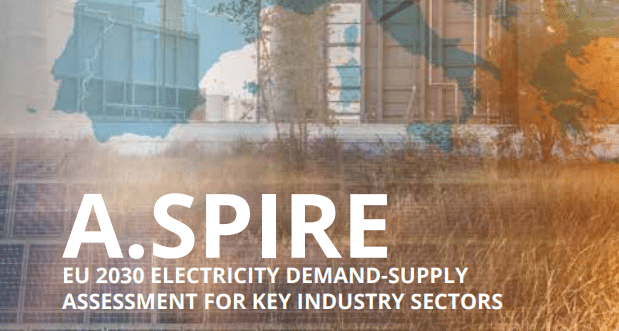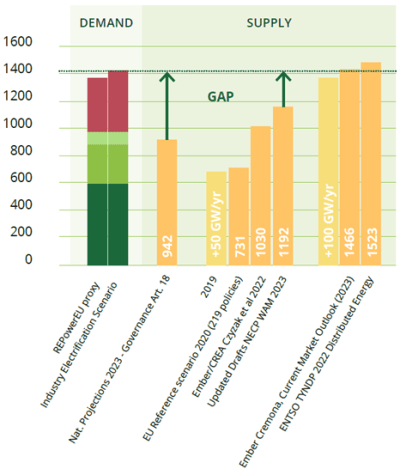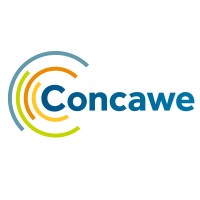A.SPIRE – The EU’s industrial electricity needs in 2030
EnergyVille/VITO analysed the potential electricity demand growth in EU industries by 2030 and compared this with the speed of investing in additional renewable capacity according to the EU member states’ most recent energy plans and ambitions.

The EU has set ambitious targets for 2030 that imply a strong electrification of different sectors. To achieve carbon neutrality in the industry sector, the latest EU scenarios emphasise the role of both direct and indirect electrification, such as the production of green molecules like hydrogen and derivatives. Reaching carbon neutrality by electrification means making sure our electricity is completely clean, and this means we need to produce a lot more renewable energy.
EU Policies for 2030
As part of the REPowerEU strategy, the European Commission proposed significant updates to the Renewable Energy Directive, to adapt it to the evolving energy landscape. In October 2023, a new Renewables Energy Directive was adopted. The primary goal is to increase the proportion of renewable energy in the EU’s overall energy consumption to 42.5% by 2030, with an additional 2.5% indicative top-up to facilitate achieving a 45% target.
Main Project Goals
In this project, EnergyVille/VITO analysed:
- How strong electricity demand may grow in key industry sectors by 2030.
- Whether EU member states are moving fast enough to secure the needed investments in additional renewable capacity.
- What could be the possible impact on energy infrastructure in the trilateral region of Belgium, the Netherlands and Germany.
Insights from the Project
Reaching net zero by 2050 will greatly impact the electricity landscape in 2030. At EU level, total electricity generation will need to increase by at least 25-30% by 2030. More importantly, total electricity generation from renewable sources may increase by a factor of 2.3. This puts a serious challenge on the power sector: apart from decarbonising current production, the sector needs to speed up its investments in additional zero carbon capacity.
In this study, we quantified the gap between the EU ambitions for renewable electricity and the EU need for renewable electricity by 2030. At EU level, the renewable electricity gap is around 20% (500 TWh out of 2500 TWh). This gap is illustrated in Figure 1, which provides more detals on the composition of the Industry Electrification Scenario and other supply scenarios available in literature. The different colors in this figure indicate the use of the additional electricity: the dark green represents a replacement of non-renewable energy, the medium green indicates buildings and transport, the light green represents hydrogen and other, and the red indicates industry.

On a member state level, however, the renewable electricity gap can be much larger. In Belgium, Germany, the Netherlands, Poland and Romania, ambition in renewable action plans is not enough to cover the large increase required for industry electrification. Without additional production or imports of clean fuels (hydrogen or derived fuels), these countries may need to increase their electricity imports by more than 50%.
Methodology
The study is partially based on the electricity increase of the AIDRES EU Mix 2030 scenario and partially on a bottom-up analysis by subsector. The need for hydrogen is aligned with the hydrogen use of the RePowerEU initiative, except for hydrogen for ‘Industrial Heat’. The study is adapted to the needs of A.SPIRE, the European association which manages and implements the Processes4Planet co-programmed partnership.
The EnergyVille Industry Electrification Scenario was developed which provides a local industry perspective on the electricity demand. This scenario aligns member states’ 2030 renewable electricity demand with the REPowerEU vision to increase independency within Europe. The Industry Electrification Scenario is complemented with two alternative outlooks on the demand side: the TYNDP Distributed Energy Scenario and the Technology Driven Scenario by Ember.
On the supply side, two different perspectives on electricity generation are presented: the Existing Measures Scenario and the Latest National Plans Scenario. These perspectives provide insights on the 2030 electricity generation according to current measures and the possible levels of renewable electricity generation we can reach according to the latest ambitions of member states. The shortages and excesses of renewable electricity at member state level bring the study to an interconnection analysis, challenging the ENTSO TYNDP24 2030 reference grid.
Figure 2 shows the resulting analysis of the gap between member states for the hypothetical scenario combining the Industry Electrification demands and the Latest National Plans supply. The country colour indicates the amount of electricity imports or exports compared to historical levels. The colour yellow indicates a large increase in electricity imports (+50%), green represents a large increase in electricity exports (+50%), while grey-coloured countries show no large change in the net electricity flow.

Want to know more?
Curious to learn more about this fascinating project? Below, you will find a downloadable infographic offering key insights and highlights. Feel free to download and explore the attached infographic for a visual overview of the project details.
Should you have any questions or need further information, our expert Wouter Nijs is ready to assist you. Do not hesitate to contact him for additional questions or clarifications; he will be happy to guide you through the ins and outs of the project.


